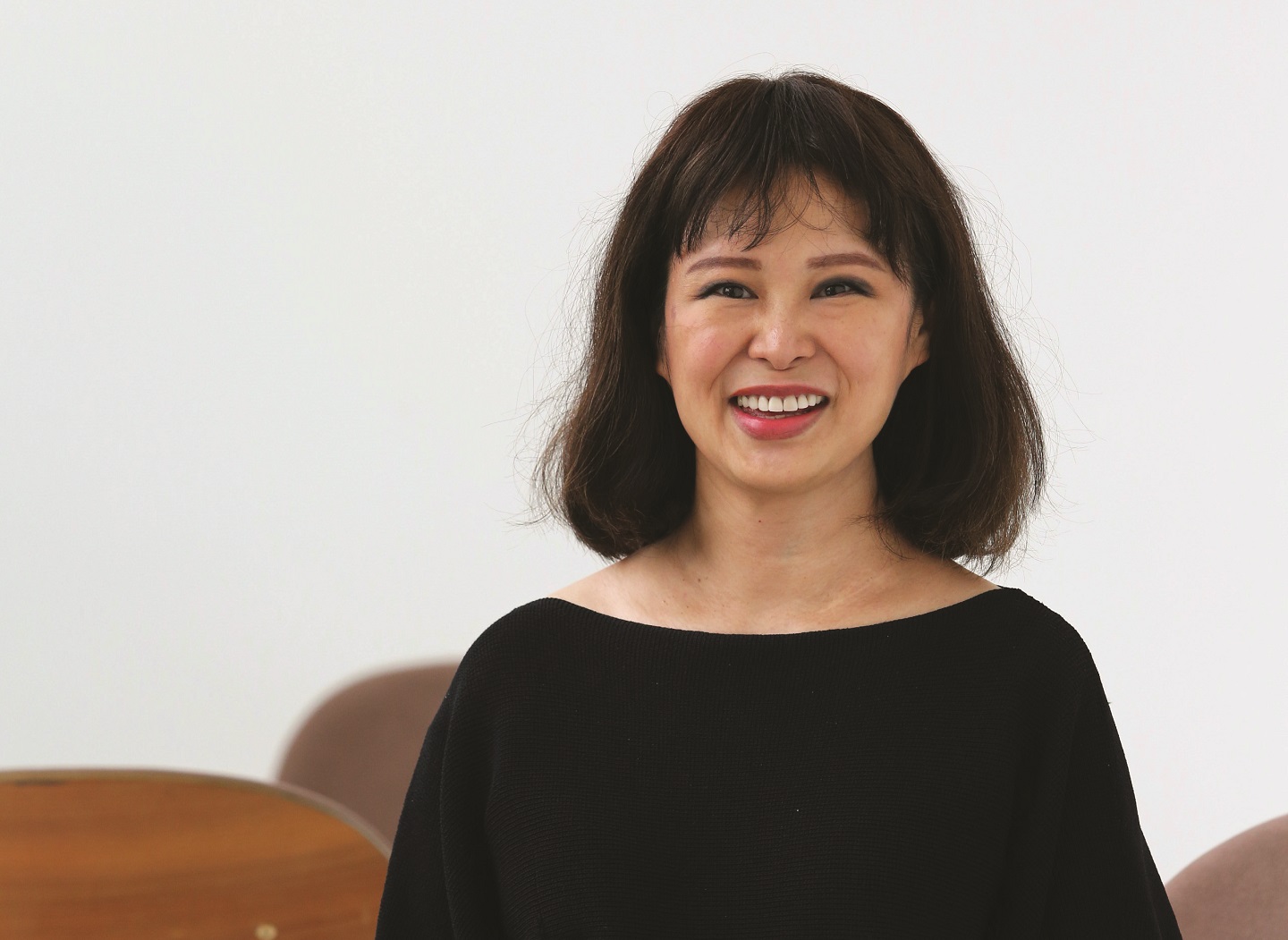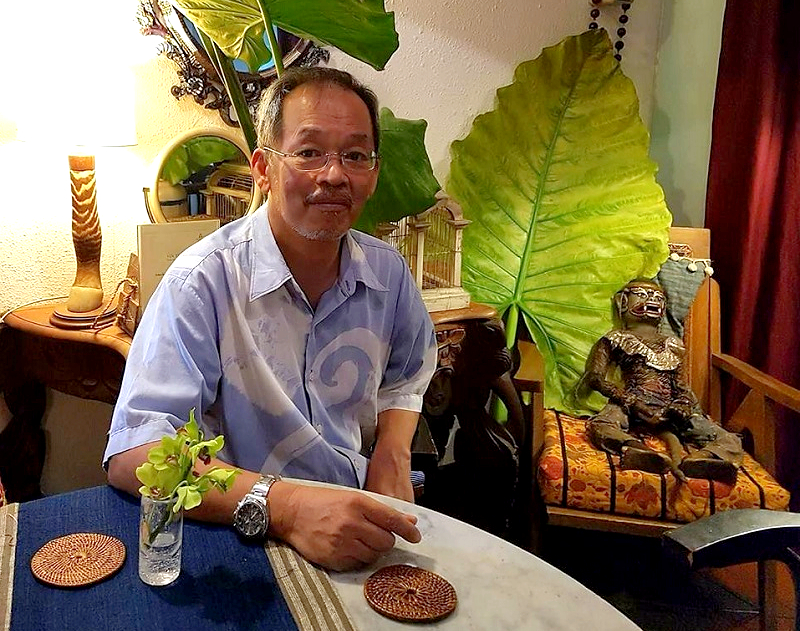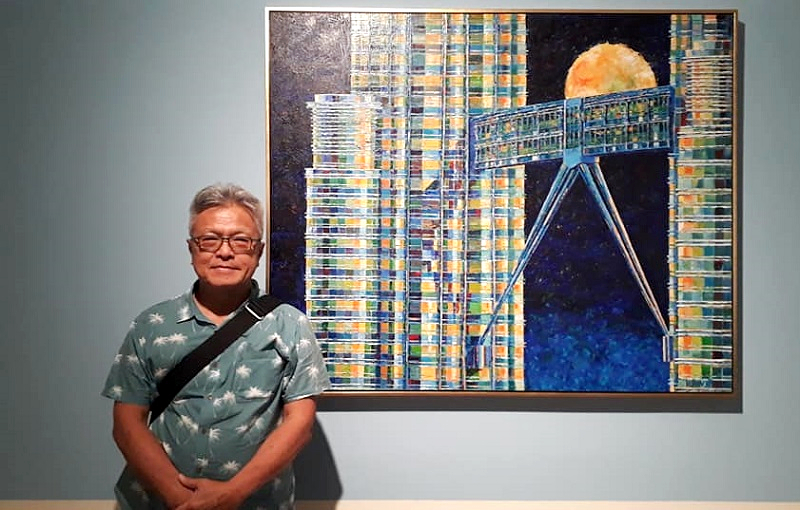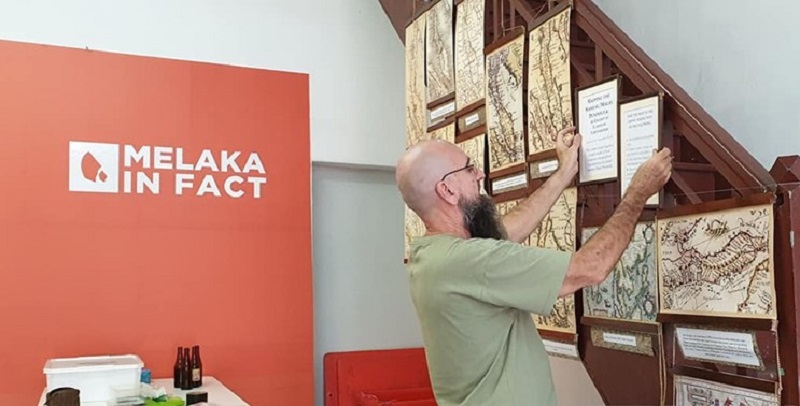
Datin Saidah Rastam is passionate about keeping Melaka's history alive (Photo: Sam Fong/The Edge)
Melaka may proudly bear the label Bandaraya Bersejarah, but the reality is that many Malaysians do not know that much about the colourful history of this coastal state outside of what is contained in secondary school textbooks. Swashbuckling stories of Hang Tuah and his crew play out quite dramatically, but the role Melaka held in the formation of Malaya bears more significance than we may think.
Lawyer, composer and history buff Datin Saidah Rastam remembers the exact moment she realised this. “I had read about the premier of China coming to Putrajaya to witness the signing of an MoU between Melaka and the Chinese province of Guangdong in 2015, and then zooming off to Jonker Street to buy jam tarts and talk about reviving old relationships with the state. When you think about it, why would the second-most powerful man in the world go to Melaka? It didn’t fit, so I did a bit of reading. It appears that Melaka is but one node in China’s ‘String of Pearls’, in which it has developed facilities along major maritime chokepoints, inluding the Straits of Malacca. A licence for a deep sea port was granted, daily flights were planned between Melaka and Guangzhou and the then Chief Minister encouraged Melakans to learn Mandarin. “
“Well, that MoU provided for cooperation across virtually every domain, from industrial development, commercial trade to museums. Again, the latter is especially interesting — and then I realised it was the Cheng Ho revival and the repositioning of China as a major superpower. Why was this being played out in Melaka? Partly because the narrow Straits of Malacca is one of the world’s primary oil transit chokepoints,” she adds.
20110421_bld_melaka_agi_2.jpg

And then, there’s the matter of Singapore — it isn’t possible to understand the background of both these Straits Settlements separately as many prominent Singaporean Peranakans, like Tan Kim Seng and Tan Tock Seng, draw their family histories from Melaka. “Key eyewitness accounts of Raffles’ new Singapore were written by Munshi Abdullah, who was from Kampong Pali in Melaka. When the British were trying to set up Singapore, they invited rich Melakan merchants to go there, and these pioneers went. Even now, to study the rituals and living cultures of the Chettis or the Babas, for instance, Singaporeans come to Melaka,” Saidah points out.
She was inspired to learn more, so she and fellow history lovers Bert Tan and Razak Bahrom sought funding for a project that would uncover more of Melaka’s history. It took a while before it was approved, but in 2017, Melaka in Fact was launched with a mission to share narratives, texts and people’s histories relating to this historical city, and to work towards a more nuanced and evidence-based understanding of the past.
Melaka in Fact has interviewed more than 2,000 households, documented festivals and rituals, conducted cultural mapping, held regular lectures by scholars, worked with institutions of higher learning and engaged the public via social media on lesser-known historical facts pertaining to Melaka. A major event for Melaka in Fact was a conference that was held last month, with award-winning historian Dr Peter Borschberg as academic convenor, where scholars and historians from all over the world pooled their bodies of work on the subject of Melaka and discussed their findings.
20228673_1478785768826228_5146937228530240795_n.jpg

“A lot of studies exist on Melaka the sultanate. Less so on Melaka the famed entrepôt — its local commerce, society and maritime laws and mechanisms. And there has been fascinating recent scholarship on Melaka’s early history, some of it based on less familiar sources. Through our work with the conference and our other on-ground activities such as cultural mapping and community engagement, we hope to contribute to a broader understanding of Melaka’s multiple histories,” Saidah says.
Her initial plan for Melaka in Fact was quite ambitious, but certain on-ground realities have required a change in plans. “I wanted to do a big Hamilton-style show at the end of it all because people won’t read historical papers or scholarly publications. That’s why I thought we’d do something that really grabs hearts and minds,” she says, grinning. “I was convinced that if we could dramatise Melaka’s story, the whole world would want to know more.”
In the end, it is the cultural mapping efforts — the brainchild of Melakan heritage activist Tan — that have been most interesting. “Quite frankly, the stories we uncovered have been amazing,” she gushes. “We were honoured that the professors came — including top names you’d see on Kinokuniya’s bookshelves, pretty much — and sprinkled their fairy dust and deep wisdom on the project, but equally amazing was the helpfulness of the communities in Kampung Chetti, Tengkera, Bandar Hilir and Bukit Cina, among others … gosh, thinking about it still makes my hair stand on end.”
vic_chin.jpg

Parts of the research have been digitised and will be made available online. Of particular interest are the stories told by various Melakans, including Peranakan cultural specialist Cedric Tan and artist Victor Chin. Told in Q&A style, it’s a remarkably intimate way to convey memories of a Melaka gone by, filled with interesting anecdotes that fill in conventional narratives with colour and personality. In the cultural mapping section, a future collaboration with Google Arts and Culture will let you walk along the streets of Melaka from the comfort of your own homes — real-time images are available for some areas, while detailed mapping is provided for others.
“Making the information available to the public was a key deliverable for us,” Saidah says. “Datuk Shahril Ridza Ridzuan (Khazanah’s current managing director) was quite particular about this not being a syok sendiri thing — Khazanah’s money must be used for public benefit. He said, ‘When I google ‘Melaka and history’, Melaka in Fact must come out at the top. And no paying! That’s a tough call quite so soon, but we are on Google’s second page, so we are definitely getting there.”
The search for continued funding and partners to work with are ongoing, as Saidah, Tan and Razak hope that the work does not stop. “There is so much more to find out, so many more stories we need to record. And we are sort of running short on time, with haphazard construction and loud tourism initiatives ... and historic languages and traditionas are dying out. Our research is time sensitive and important, given the aggressive pace of commercial and political activities in Melaka. The data is half the work, and then we need to develop partnerships with technology companies to see how to best present it in a way that’s relevant and interesting.”
melaka_in_fact.jpg

In fact, she strongly believes that there is much left to be done, starting with the way we look at our collective histories. “I felt that there was a lot of bullshit — as we argue if Hang Tuah was Chinese or not, we are overlooking the bigger picture here. Melaka’s history forms our early national history and marks a high point in Malay consciousness till now. But we still don’t know essential things like what currencies were used in this famed entrepôt, or what long-distance trade agreements were like, or the strengths in governance and multiculturalism. In Kedah, much of the history is archaeological, but in Melaka, we have the country’s oldest living city. Why aren’t our stakeholders doing a better job in talking about it, rather than going the Disney route with trishaws?”
She pauses, momentarily lost in thought. “When you talk about history, you know what? Don’t fall into the colonial trap of Malay-Chinese-Indian ... we are so much richer than that. ‘Malay’ and ‘Indian’ are British terms, British constructs. These multiple hybrid histories are so rich and I’m not saying that we need to celebrate it all, carnival-like, but accept that it is there. This whole trope about the factions — please lah, historically, everyone lived cheek by jowl in the same areas, with reban ayam sitting across two family compounds. You just have to go to Tengkera today to see old communities with deep roots and different cultures living together, as they have done for centuries.”
Our conversation soon meanders back to Saidah’s initial idea of the stage show, which is quite fitting bearing in mind her own background as a composer. But it is likely that it will not come to fruition now, although the reason has less to do with funding and more to do with purpose. “Melaka in Fact has become bigger than a musical,” she says, her eyes lighting up animatedly. “I’m 55 and I reckon I have 10 good years left. Do I want my last major piece of work to be a hot-shit musical, which comes and goes, or this, which might touch more people and spark more things?” Judging from the work we’ve seen, we kind of know the answer to that already.
This article first appeared on Sept 9, 2019 in The Edge Malaysia.


